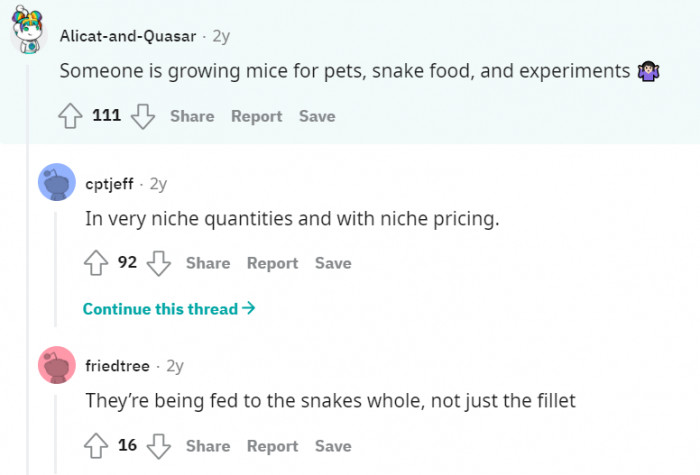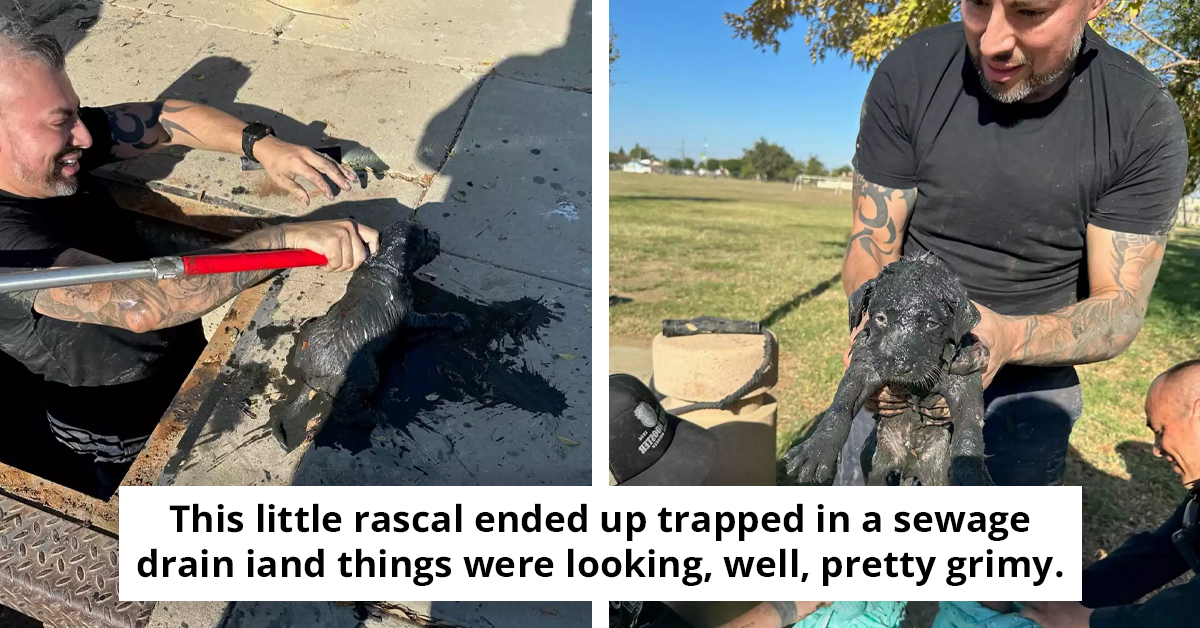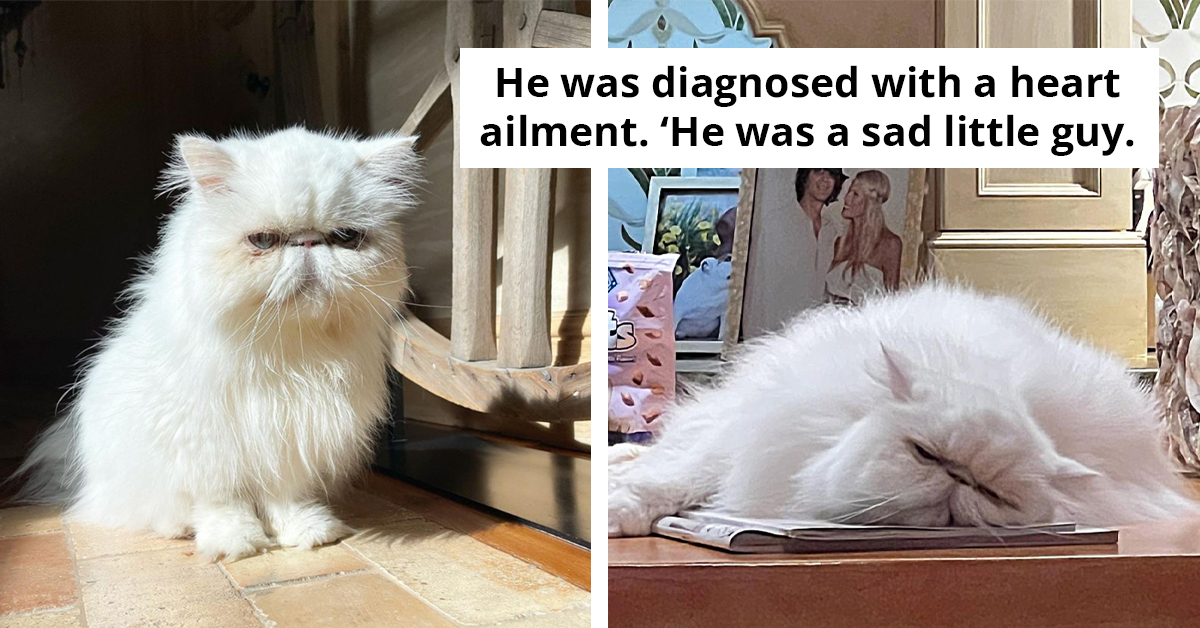Reddit Users Try To Answer The Question About Why There Isn't Mouse-Flavored Cat Food
Cats love chasing and sometimes eating mice, so it's no wonder why people are wondering why there isn't mouse-flavored cat food.
User Taira123 is among them. They asked Reddit the question, and people provided a variety of interesting answers.
Some of the responses came from a marketing standpoint, while others were also seeking answers.
Countless pests, including mice, exist in this world. So why aren't humans hunting them down and turning them into meals for felines?
The quick answer is that it's illegal. The FDA doesn't allow it, according to Shaun Belongie, the national brand manager for Friskies.
Producing pet food must meet the same standards as producing human food. In other words, both industries practice safety standards and sanitation.
Since the USA doesn't authorize mice as a food source, the country's Department of Agriculture has never designed manufacturing standards for these creatures.
If you're a cat owner, would you want to feed the cat, whom you worked so hard to pamper, a pest? It's just unthinkable, isn't it?
Manufacturing it isn't feasible for psychological reasons. Humans expect to smell something decent (if not pleasant) when they open a can of cat food.
Now imagine what canned mouse would smell like. It sure isn't appealing!
We have compiled posts of what Redditors think is the reason behind cat food not having mouse-flavored variants. Let's check them out!
A Reddit user asks

Cats just love preying on smaller animals, says this user.

If we were smaller than cats, do you think they'd prey on us too?

The Nutritional Needs of Cats
The question of why there isn't mouse-flavored cat food delves into the nutritional and psychological needs of cats. Research in veterinary nutrition emphasizes that while cats are obligate carnivores and have specific dietary requirements, the flavor profiles of commercial cat foods are designed to appeal to human preferences as much as feline ones. A study published in the Journal of Animal Science indicates that cats may not have the same taste preferences as humans, leading manufacturers to create flavors that are more marketable.
Interestingly, cats are often attracted to stronger, more pungent flavors, which might explain the popularity of fish or poultry over more exotic options like mouse.
The Psychology of Pet Food Choices
The question of why there isn't mouse-flavored cat food speaks to both the psychology of consumer behavior and the dietary preferences of cats.
Research in animal behavior shows that while cats are obligate carnivores, their preferences for certain flavors and scents are highly individual.
A study published in the Journal of Animal Science found that cats often prefer foods that mimic their natural prey, such as chicken or fish, over less familiar options like mouse.
A practical answer

Mice are used for something else.

Makes you wonder too.

From a behavioral standpoint, the concept of prey drive plays a significant role in how cats interact with their food. Research shows that the natural hunting instincts of cats can influence their food preferences. A study in the Journal of Feline Medicine and Surgery highlights that cats are more likely to engage with foods that mimic their natural prey, both in taste and presentation.
While a mouse-flavored food might appeal to their instincts, the practicality of sourcing such ingredients for mass production poses significant challenges, leading manufacturers to stick with more conventional flavors.
Moreover, the marketing of pet food is heavily influenced by consumer perceptions and beliefs about what is appealing to pets.
According to research from the University of Pennsylvania, companies often cater to human emotions and perceptions when creating pet food products.
This means that the absence of mouse-flavored options might be a strategic choice based on what pet owners believe their cats would enjoy.
Not a popular answer, but probably among the best answers.

Some users want to take some answers literally.

We also have curious ones.

Understanding the Market for Pet Foods
The pet food industry is influenced by a variety of factors, including consumer preferences and regulatory standards. Research indicates that pet food manufacturers often prioritize flavors that are widely accepted by pet owners, even if these flavors do not align with a cat's natural diet. A study published in the Journal of Animal Nutrition suggests that the marketing of pet foods tends to focus on palatability and digestibility to appeal to humans rather than strictly adhering to the dietary needs of cats.
This dynamic raises interesting questions about the balance between pet health and consumer marketing strategies in the industry.
Understanding Animal Preferences
Understanding the dietary preferences of cats can also involve examining their evolutionary history.
Research suggests that domestic cats retain many hunting instincts from their wild ancestors, influencing their food choices.
As noted in studies from animal behavior experts, while cats may be instinctively drawn to the scent of mice, they may not necessarily prefer it in a processed form.
An added knowledge.

Yes, indeed we do. We wouldn't want to buy mice, would we?

This is why there will never be mouse-flavored cat food.

Additionally, the concept of 'ethology'—the study of animal behavior—can provide insights into how domestic cats interact with their food and hunting instincts. Research in ethology shows that cats exhibit specific behaviors when hunting and consuming prey, which can influence their preferences. Understanding these behaviors can help pet owners make more informed decisions about their cats' diets, potentially leading to better health outcomes.
By incorporating a variety of textures and flavors that align with their natural instincts, owners can create a more satisfying feeding experience for their cats.
This highlights the importance of recognizing the complexities of animal preferences when it comes to food.
Moreover, a study from the University of California, Davis, indicates that the texture and aroma of food are significant factors in a cat's acceptance of a particular flavor.
Thus, even if mouse-flavored food were available, it might not align with the palatability standards set by cats.
Apparently this user wants another cat food flavor.

This user was shocked to see the title.

Think about it. Even if the cat food manufacturer thought of something creative for the name, the word 'mouse' doesn't sound appetizing, even if it's for the felines.

Practical Considerations for Pet Owners
For pet owners looking to cater to their cats' preferences, experts recommend focusing on high-quality protein sources that align with their natural diets.
Providing a variety of flavors and textures can help ensure that cats receive balanced nutrition while also satisfying their taste preferences.
Additionally, consulting with veterinarians can provide valuable insights into dietary needs and preferences.
Indeed.

Another curious user

Some cats eat mice, and some only play with them.

Ultimately, understanding the psychological factors influencing pet food choices can enhance the well-being of our feline companions.
As research suggests, recognizing and catering to their preferences can lead to happier and healthier pets.
This highlights the importance of being attentive to the unique needs of animals in our care.
Now we know!

Would mouse-smelling food entice our beloved felines? People will probably throw up at the smell, though.

What are the other reasons why there aren't any mouse-flavored cat food?
Logistically, manufacturing mice as food for felines isn't practical. Most of them are very tiny, weighing only about 2/3 of an ounce.
In other words, filling a standard cat food can would require four mice. That's more than a hundred mice for each case of 24 cans.
If Friskies or some other cat food company were to go through this route, they'd have to capture millions of mice and then find a method of slaughtering them humanely.
Moreover, these companies would have to secure permits from the government (the FDA is an example) to ensure that everything is safe and up to standard. Given the FDA's policies, that would be a complicated process to navigate.
Psychological Analysis
The absence of mouse-flavored cat food raises interesting questions about animal preferences and marketing strategies. Understanding what appeals to cats can help owners make better choices for their pets.
It's essential to consider the complexities of animal behavior in all aspects of pet care.
Analysis generated by AI
Analysis & Alternative Approaches
In conclusion, the absence of mouse-flavored cat food reflects a combination of animal preferences and consumer perceptions.
By understanding these factors, pet owners can make informed choices that support their cats' health and happiness.
This underscores the value of considering both animal behavior and marketing strategies in pet care.
Analysis & Alternative Approaches
In conclusion, the absence of mouse-flavored cat food illuminates the complexities of pet nutrition and consumer preferences. Understanding the nutritional needs of cats, alongside their behavioral instincts, can inform better product development in the pet food industry.
Ultimately, knowing how to cater to a cat's natural preferences can enhance their eating experience and overall health.



